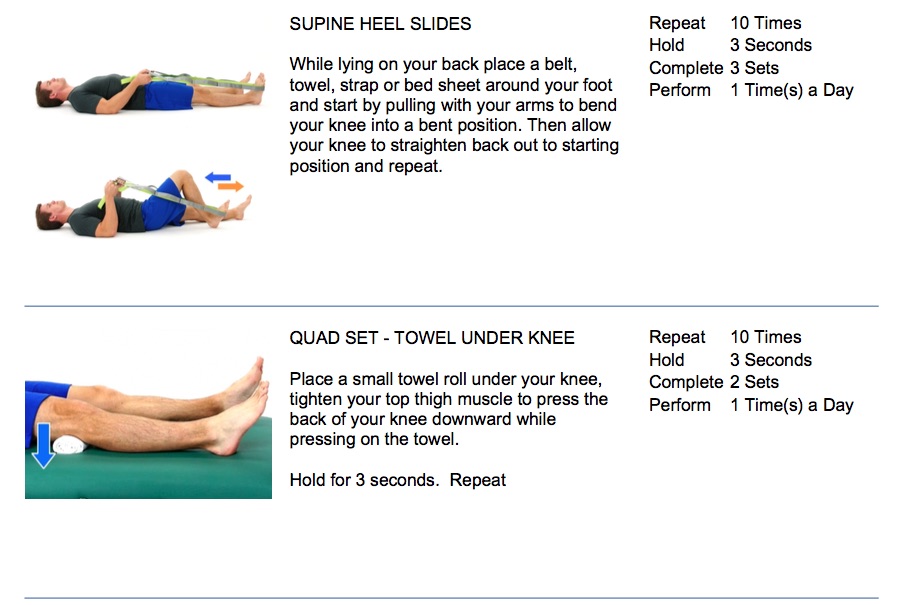
Dr. Coleman shares exercise advice with his patients regularly, and not unlike a personalized overall treatment plan, he considers your medical history, current health, age, and other factors when he shares this knowledge. Your knees are the largest joints in your body, and the muscles around your knee should be well-balanced and strong so too much pressure isn’t put on them. Your knee ligaments, cartilage, and the meniscus all bear the brunt of it. Since your knee is a joint that moves in just one direction, building stability is critical. For maintaining knee stability, dr. Coleman recommends a series of easy-to-do exercises that you can perform anywhere, anytime.

Aging doesn’t just cost you articular cartilage flexibility. It also takes a toll on your muscles, too — and that can lead to knee instability. Sarcopenia is the natural loss of muscle mass that comes with age. The process typically starts around age 30. On average, adults lose 3% to 5% of their muscle strength every decade after that birthday. A strength program targeting your lower body helps limit the decline in muscles supporting your knee. “think of those muscles as load-sharing cables,” says dr. Orlandi. “they work to limit stress and pressure on the joint. ”workout equipment offers numerous ways to build strength through exercises such as leg presses, hamstring curls and quad extensions. https://en.wikipedia.org/wiki/Health
The smartest moves for knee stability
The medial collateral ligament (mcl) provides inner knee stability and the lateral collateral ligament (lcl) provides outer knee stability.
 The mcl is a stabilizer ligament and works to prevent valgus stress. It attaches on the medial portion of both the femur and tibia connecting the two bones. It is a common ligament injury caused by valgus and external rotational forces. For the lcl, when you have forces applied to the inside of the knee, the lcl stretches to protect it from moving laterally. It will tear if it moves too far laterally.
The mcl is a stabilizer ligament and works to prevent valgus stress. It attaches on the medial portion of both the femur and tibia connecting the two bones. It is a common ligament injury caused by valgus and external rotational forces. For the lcl, when you have forces applied to the inside of the knee, the lcl stretches to protect it from moving laterally. It will tear if it moves too far laterally.
Knee instability, also known as patellar instability, is an umbrella term to describe any injury to the kneecap that prevents normal movement and joint stability. When you bend your knee, the kneecap moves up and down inside a groove known as the trochlea. Think of it as a train moving along a train track. In an unstable knee, the kneecap moves off this track as it works towards its resting place. Left untreated, you’re at a heightened risk to experience more episodes of instability, and it can even lead to knee dislocation. Knee instability can develop for a couple different reasons, but the most common cause is a result of acute injury.
1. Straight leg raises
Straight leg raises target front thigh muscles that stabilize the knee. For this exercise, start by lying on your back and slowly lift one leg off the ground, keeping it straight. Lower it back down without touching the ground and repeat on the other leg. The physical therapist can help ensure the correct technique with this exercise, which is essential to target the correct muscles.
Straight leg raises are simple and will strengthen your quadricep muscles. This is one of the simple exercises that do not put pressure on your knee. Lie on your back on the floor. Bend your knee so your left foot is flat on the ground. Keep your other leg straight on the ground and then raise it to the level of your bent knee while keeping the leg straight. Feel a stretch. Repeat 10 times for each side. Prone.
Swiss ball training was conducted 3 days (mon-wed-fri) per week for 10 weeks. Each participant was given a ball that was sized in accordance to their height. The size of the ball was conducive to achieving 90° angle at both the hip and knee. The stability balls were either 55 or 65 cm in height. The volume of exercise was kept consistent for each individual. The exercise program progressed in difficulty by increasing the sets and repetitions (week 1: 2 sets of 6 repetitions to week 10: 3 sets of 14 repetitions) or duration (week 1: 2 sets of 30s to week 10: 2 sets of 60s).
The standing hamstring curls is another great strengthening exercise that engages the buttocks (gluteal muscles) and hamstrings. How to do it? stand upright with your knees two inches apart. Hold on to a chair for support. Slowly bend one knee behind your body, and lift your heel off the ground while keeping your thighs properly aligned. Continue to raise your heel in a gentle motion till your knee reaches a 90-degree angle. Make sure to keep your other leg slightly bent to prevent locking. Hold the bent leg for a few seconds, and lower it towards the ground. Switch legs, and repeat the exercise.